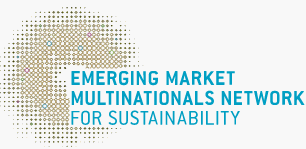How to cope with the global supply chain hit by COVID-19?
2020-04-13GoldebBeeGoldenBee0

The COVID-19 pandemic impacted many industries and its impact on the global supply chains is unpredictable, which has put forward higher requirements for risk management. If enterprises can re-examine the value of supply chain management, sort out the risk list of supply chains, and upgrade the digital capabilities of supply chain in this situation, they can, to some extent, enhance their sustainability and grow the antibody to major uncertain risks.
The author thinks that it can be carried out as follows:
Changing global supply chains into global digital chains
After the outbreak of the pandemic, a number of global enterprises are confronted with problems like inventory and process problems, which forces them to come out of the comfort zone for the solutions, so as to promote their supply chain management to a higher level. At the same time, due to the loss of offline operation, enterprises have to promote online and offline integration. Therefore, their supply chains become smoother.
Digital transformation is beneficial for risk resistance. During the pandemic, the enterprises with a high degree of digitalization in the supply chains response quickly and have an outstanding performance in supplying anti-pandemic materials and daily necessities.
Of course, in addition to digital operation and trade from the perspective of enterprises, we also need to actively deploy in the field of information infrastructure in accordance with the requirements of modern supply chains, establish digital computing R & D centers and digital computing service centers that can meet higher-standard needs, and accelerate the breakthrough of cutting-edge digital technology.

At the same time, we need to upgrade and effectively deploy cross-border trade settlement, services and logistics to ensure that global supply chains keep smooth when the crisis comes.
Upgrading global supply chains to shared global chains
It is necessary to rely on new cooperation mode. From supply chains to shared chains, it is a systematic upgrade of traditional supply and demand, trade, configuration relationship and partnership. This process also reflects in fairly allocating resources, jointly developing technology, taking risks and sharing values.
It is certainly not easy to achieve the goal, especially for those large enterprises in the leading position of the supply chain. The change from the supply chain to shared chain means that more technologies, resources and initiatives would be shared. But if you look at the performance of those large enterprises during the pandemic, you can find that they face more systemic risks and more rely on domestic and foreign, upstream and downstream enterprises, too. Especially when you look at global supply chains, you will find that they also need sense of security.
The sense of security cannot be given or obtained overnight. Cross-border interest communities should be built at the industry level, and industrial alliance should work together to build partnerships. You will find that even if this shared chain is limited and differentiated, it can increase the interests of many enterprises with strong complementarity.
Of course, those monopoly enterprises are excluded. Monopoly may be form by cooperative large enterprises.
Putting supply chain management in a prior position
For a long time, supply-chain affairs like enterprise procurement are always assigned to middle-level managers by executives. And the annual cost would be asked to reduce by one to several percentage points.

The cost is reduced while the investment is not increased. And many executives are not concerned with the development of supply chain. The direct result is that those enterprises seldom evaluate the risk level of supply chains regularly, when the risk comes, they suddenly find that the supply chain that was originally considered reliable and easy to manage is very fragile.
In the pandemic, many multinational companies with insufficient inventory still have a fluke mentality. They are confident that as long as their staffs return to work, they can replenish goods in time. But later, as we all know, the inventory is far from enough, the number of products which can be sold decreases, and the production expansion plans of some hot products are canceled.
It can be seen that CEOs should spend much time on supply chain management, especially supply chain risk management.
Resolving supply chain risks through sustainable development
In recent years, it can be seen that sustainable development is the best solution to many problems, such as natural disasters, social crises, trade games among major countries and consumer rights protection.

Sustainable development is also critical to uncertain risks caused by the pandemic. It means that we should be more cautious to respect nature and treat other species well to prevent the recurrence of disasters like Australian wildfires and COVID-19. We also hope that in the process of building a sustainable supply chain, enterprises can take sustainable development as a consensus to promote the harmonious relationship between enterprises and upstream and downstream partners, enterprises and their industries, enterprises and global value chains.
It is proved that a sustainable supply chain is beneficial for the enterprises, the society and the natural ecology involved.
(The full Chinese version is written by GoldenBee Task Force, if you want to see it, please click here)
(All the images are from the Internet)
Best Practices
- The 100-year brand — Air Liquide also has a sense of juvenile
- Beijing Public Transportation Corporation: Developing green transportation to build a harmonious and livable capital
- CGN: Building a modern factory in barren deserts and developing a new win-win cooperation model along “Belt and Road”
Upcoming Event

All the materials on the site “Source: XXX (not from this site)” have been reprinted from other media. They do not imply the agreement by the site.
All the materials with “Source: CSR-China Website” are the copyright of CSR-China Website. None of them may be used in any form or by any means without permission from CSR-China Website.
GoldenBee Official WeChat
Copyright © Csr-china.net All Right Reserved.
京ICP备19010813号










